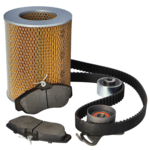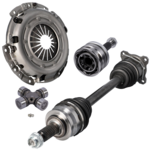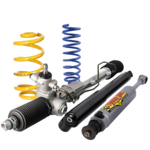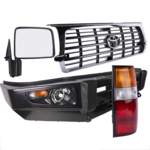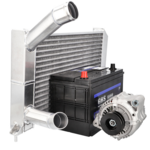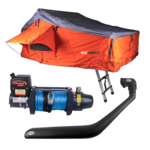Here at Euro4x4parts we aim to encourage off-roading as much as possible. Learning how to handle your 4x4 out there in the field is very important.
This article will give you a brief overview of some basic off-roading skills but is certainly not designed as a substitute for the precious techniques you can learn on an off-road driving course organised by an official training centre.
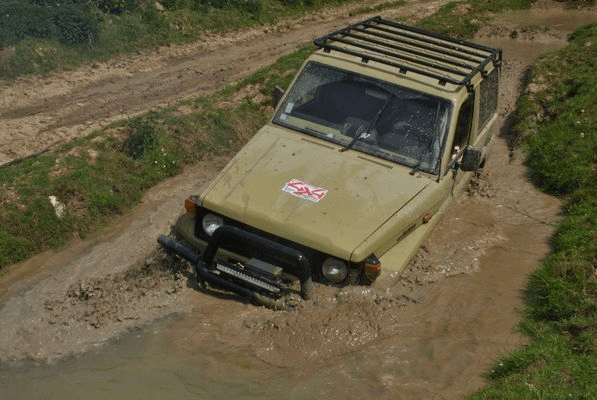
Ruts
When you take your 4x4 through a rutted track, the most important thing is to know the ground clearance of your 4x4. It is also important to get a good look at the obstacle, the depth, the nature of the ground, and be aware of long grass or anything else that might hide the ground.
When you have decided to drive along ruts, stick with it - don't try to get out of them. Keep the wheels in right directions and follow the variations of the edges of the ruts.
If you hear any strange rubbing or scraping noises don't feel shy about backing up and trying another trajectory if necessary. Sometimes a few centimetres to the right or to the left are enough to make a difference. If the ground is soft but load-bearing, you can move forward by alternating short steps forward and backwards to compact the ground, while trying to avoid getting stuck. If the zone is long, watch out when you take a run-up. If you head into the zone too fast you might end up getting stuck deeper or damage your 4x4.
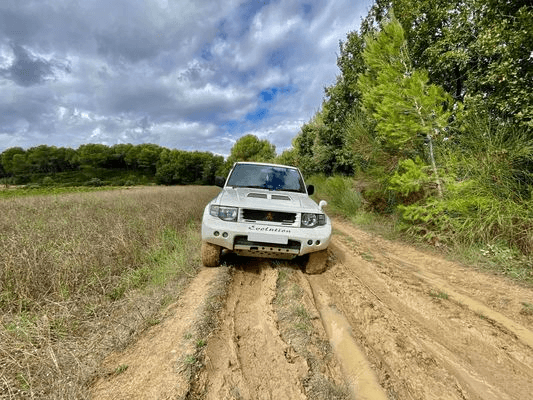
If you try to get out of a rut with too much force or speed or oversteering, your 4x4 may well slip. There is a risk that the 4x4 will violently jump-off course when the wheels get back their grip. This could lead to a close encounter with a rock or tree along the edge of the track!

The correct way to get out of a rutted path is with gentle steering and hardly any acceleration and by carefully choosing a point where the rut is at its shallowest.
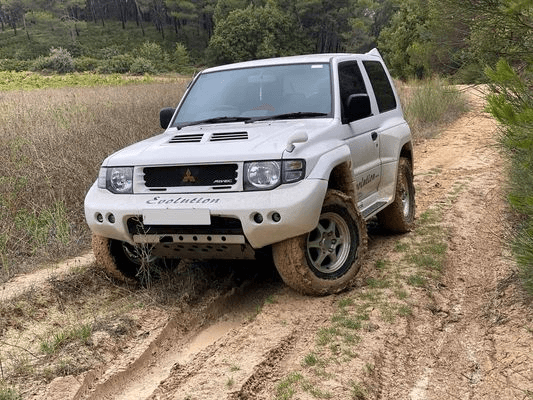
If the ruts appear too deep you may choose to head along the ridge. Once again, don't rush it and keep an eye on your steering. You don't want to suddenly drop a wheel into the rut and find your self stuck sideways with the rear wheels in the opposite rut.
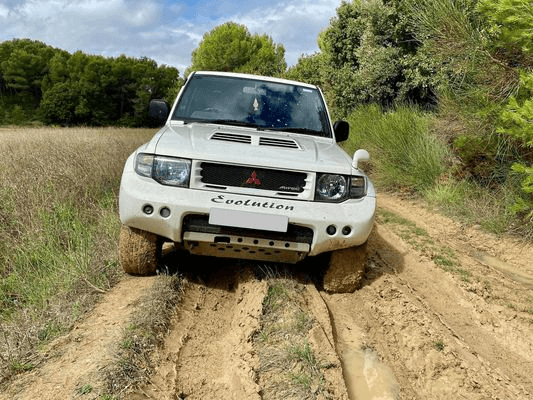
Mud
Hitting a mud bath at speed is spectacular but dangerous. You don't know what dangers are hiding in there - perhaps a rut, a log, a rock or just incredibly deep mud!
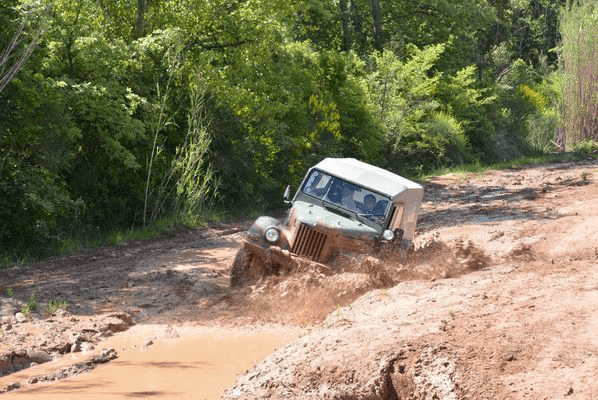
So don't feel shy about checking out the zone by foot, to test the depth and the hardness of the ground. However, don't forget that your 4x4 weighs a lot more than you. If the quagmire is narrow enough, you can test it with a stick. This basic check will allow you to define the best trajectory by favouring the shallowest area. You will also be able to spot any hidden obstacles.
Enter slowly with your 4x4 to see how firm the ground is. If you feel yourself sinking, or starting to get stuck, reverse up immediately but smoothly, avoiding any sudden braking, which would cause your vehicle to get bogged down.
As with all 4x4 driving, it's important to choose the right gear from the start. You want to avoid having to change gear as you head through this muddy zone otherwise there's a real risk of getting stuck. If this does happen, try to reverse immediately but without wheel spin or clutch slip.
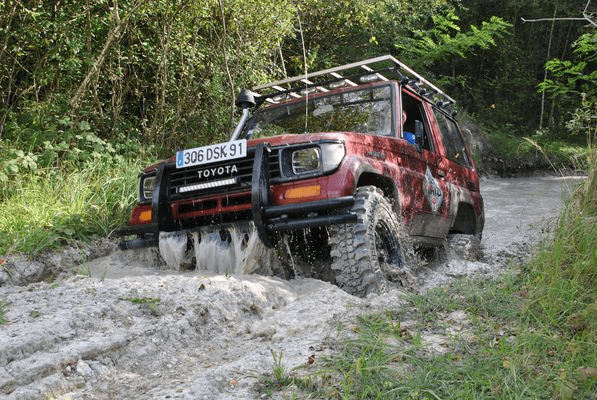
If the terrain is firm enough to take the weight of your rig you can move forwards and backwards, to compact the ground, push back the mud and make a passage. In this case, smooth braking is the key to avoid getting suddenly bogged down and stuck. Be prepared to change trajectory or use a little more momentum, but beware of traps that could damage your 4x4 or stop you dead.

You can also deflate your tyres so that the tread becomes wider and therefore improves ground contact. However, be careful not to over deflate otherwise you run the risk of the tyre slipping off the rim. Lastly, keep your speed down to avoid mud from penetrating in between the tyre bead and the rim.

Last tip:
If you 4x4 is equipped with diff-locks remember to activate them before entering the mud!
Parts
Of course, you need to make sure you have the right equipment before you head off into the wild to tackle those ruts and mud.
We've got all the parts you'll ever need for your 4x4:
Tyres
You need the right boots when you walking in mud. Same goes for your 4x4!
Choose the right tyres from our selection:
Black-Star Tyres
4x4 Suspension
Avoid getting stuck in the mud or caught in the ruts by fitting a lift kit and bigger tyres. This will improve ground clearance and improve your departure and approach angles.
We offer a range of lift kits for a wide range of 4x4s with various options to suit your requirements :
Euro4x4parts suspension kits
4x4 Protection
Before you head off in the wild don't forget about under-body protection.
We have a great range of skid plates and protection for many different 4x4 makes & models:
Credits: Thanks to Manu Bordonado (blog.4rouesmotrices.com) for his help with this article.
Please note: Euro4x4Parts publishes this information to help its customers but cannot be held responsible for the advice given here and practical consequences that ensue.
Do it yourself, you'll be even prouder! To help you out, Euro4x4parts shares its know-how and expertise in mechanics through 4X4XPERT: new products, technical sheets, and personalized tutorials... You've got the keys!
And because we also learn from your experiences, your feedback is essential. Let us know your thoughts and suggestions by email: 4x4xpert@euro4x4parts.com
Check out our complete catalogue of 4x4 parts and accessories!
All the photos in our articles are taken on authorized roads or tracks, private land, or during supervised competitions. Let's all do our part to preserve the environment!
Please note: Euro4x4parts publishes this information to help its customers, but cannot be held responsible for the advice given here and their consequences when used.








